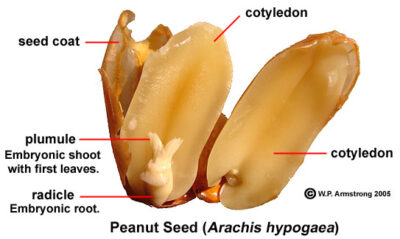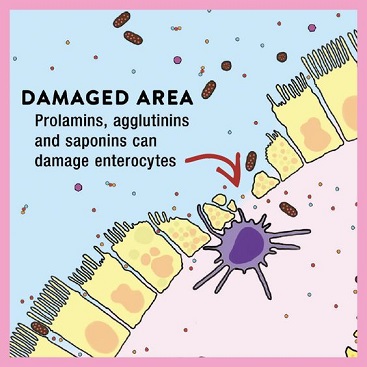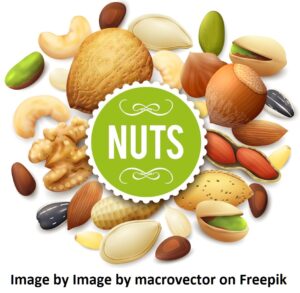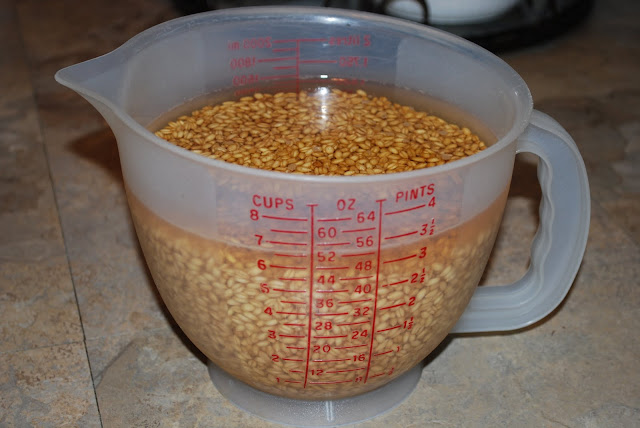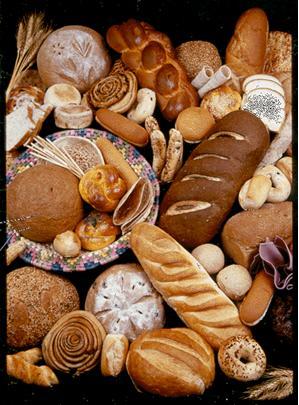About the different grains - - - and bran
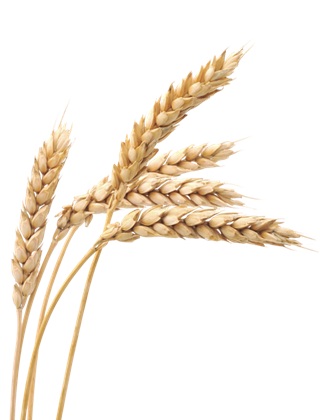

Wheat - "Ain't what it used to be"
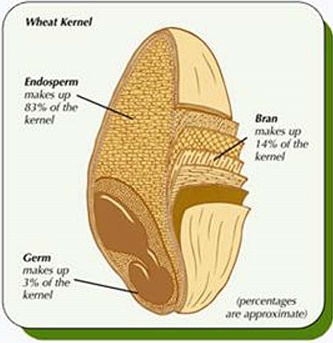
Wheat species
Buckwheat, Durum, Semolina/CousCous (purified from Durum), Spelt, Bulgar, Triticale (a wheat hybrid), Kamut, Einkorn and Emmer (two of the earliest cultivated forms)
Einkorn wheat
Earliest form of wheat farmed over 5,000 years ago. A species of hulled wheat; starch in Einkorn is slowly digested and doesn’t cause blood glucose spikes as much as other grains; contains an older form of gluten more gentle on the digestive system.
Many bible verses refer positively to eating bread, especially unleavened bread. However, the wheat of today is quite different to that of bible times
Compared to modern wheat, einkorn wheat contains:
- Half as much phyic acid – an antinutrient that blocks mineral absorption
- Contains 3-4 times beta-carotene
- Twice vitamin A
- 3-4 times lutein
- 4-5 times riboflavin
Wheat is not what it used to be due to hybridization and GM strains
The wheat plant no longer identifies with “the amber waves of grain” of more than a hundred years ago . . . now it has an efficient, shorter (~ 18″ high) stalk, resisting damage by storms and pests, making it easier to harvest. Also American wheat has been bred to have a higher gluten content than European wheat.
Modern wheat and the high quantities consumed seem to have induced several negative health effects
Including causing:
- Accelerated weight gain. One of the main sources of carbohydrates, wheat actually has a higher glycemic index at 71 (average for refined white and whole wheat flour) than table sugar (sucrose) at 65! Also a recent in vivo study determined that both WHOLE wheat and REFINED WHITE flour bread have a similarly high glycemic response. Zafar et al, 2020
Cut the wheat, Cut the weight
- Appetite stimulation.
- Gluten- related maladies. E.g. Celiac Disease, nervous disorders, and others.
- Blood sugar roller coaster ride. With INSULIN resistance as a consequence.
- Inflammation, osteoporosis, arthritis, joint pain, more. Due to its acidity and anti- nutrients, such as phytates and lectins.
Modern refining process removes nutrients / adds chemicals / damages fat
A wheat kernel (or berry or seed) is composed of:
- The bran (Outer seed coat) – ~14% of kernel; rich in fiber, B vitamins, trace minerals; removed by refining process;
- The wheat germ (small core) – ~3%; the sprouting portion of the kernel; rich source of vitamins B and E; provides nourishment for the seed; removed by refining process;
- The endosperm (the middle) – ~ 80- 85%; the mainly starch + protein food supply for the sprouting seed. Low B-vitamin and fiber content.
High milling temperatures turn grain’s fatty acids rancid. According to Sally Fallon, at the Weston A. Price Foundation, rancidity increases when milled flours are stored for long periods of time, particularly in open bins. Wheat used to be ground slowly at cool temperatures (sometimes using big stones, which leave most of its nutritious bran intact), but now it is ground using high- speed, high- temperature steel rollers .
White flour is bleached, nutrient deficient and contains harmful chemicals
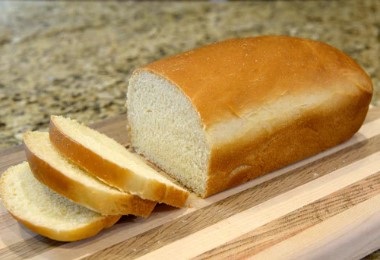
8429 Sliced crispy white bread
by freefoodphotos. Licensed CC BY 3.0
- White flour has been chemically bleached at the end of the refining process. A chlorine bath (producing chlorine oxide) is the industry standard for whitening processed flour for eye appeal, since oxidation during the refining process leaves the flour a less attractive grayish color. This process also ages the flour to improve its gluten (and thus its baking quality), replacing the need to actually take time to age the flour.
- Diabetes-causing alloxan is produced as a by-product of the flour bleaching process – Alloxan is used to purposely develop diabetes in lab rodents, since it destroys pancreatic, INSULIN-producing beta-cells by greatly increasing damaging free radical presence in them. If you don’t want to risk getting diabetes, then you don’t want this toxin in your body, even in small amounts.
- White flour is commonly the main ingredient in hamburger buns, tortillas, pastries, pasta, breads and cakes.
Nutrients lost from white flour along the refining “road”?
- Almost all its vitamin E
- 90% of its magnesium
- 80% of its iron
- 70% of its phosphorus
- 50- 80% of its B vitamins
- 50% of its calcium
- 50% of its beneficial unsaturated fatty acids
- And many more nutrients
Additives add insult to injury – “synthetic vitamins and an unabsorbable form of iron added to white flour can cause numerous imbalances; dough conditioners, stabilizers, preservatives and other additives add insult to injury.”- Sally Fallon

Nutritionless, REFINED grains are a staple of the Western Diet

Why do we do this to ourselves!? We indulge in nutrition-less, devitalized bagels, bread rolls, pastries, cake, cookies, crackers, white bread, pasta, cereal, noodles, pretzels, tacos, waffles, pancakes, muffins; grains extruded / pressed to make crunchy breakfast cereals!
Refined (Processed) and high temperature-milled grains have a poor nutrient content (except for those that have been added). Refined grains lack minerals (since the parts containing the fiber and ~80% of the nutrients have been removed). E.g. white flour, made from the endosperm of the grain is mainly starch; diets high in such refined grains lead to serious mineral deficiencies. E.g. bone loss, Parkinson’s, arrythmia.
Even UNrefined grains contain negligible amounts of vitamins A, C, D or B12. Maize (corn) is the only grain that contains beta-carotene (vitamin A’s metabolic precursor)

Cereal by dankeck. Licensed CC0 1.0
Extrusion processes make interesting cereal shapes and fancy looking crackers, but ensures even fewer surviving nutrients – “Slurries of grain are forced through tiny holes at high temperatures and pressures in giant extruders, a process that destroys nutrients and turns the proteins in grains into veritable poisons. Westerners pay a lot for expensive breakfast cereals that snap, crackle and pop, including the rising toll of poor health..”- Sally Fallon
Wheatgerm contains gut-perforating wheat germ agglutinin (WGA)
- Even small concentrations of the lectin WGA can cause proinflammatory activity in the immune system leading to gut inflammation
- WGA can bind to and activate white blood cells – again interfering with the immune system.
- WGA can penetrate the blood- brain barrier – and attach to the myelin sheath protecting the nerves.
- WGA can be toxic to cells and induce cell death.
- WGA is found in extremely high amounts in the wheat germ (even compared to high amounts of agglutinins in beans) – but WGA is also significantly present in its young sprouts and since it resists degradation by traditional methods, it is also present in sprouted wheat grain bread; there is no WGA in the endosperm (food storage area for plant), which is the source of white flour; Miskind et al, 1980

Bran - Maybe not quite the health food you thought it was
Bran is the hard outer layer of whole grains. Such as wheat, rye, oats and rice. It is rich in fiber, antioxidants and minerals.
However, bran has high phytic acid (PA) and agglutinin (notably wheat germ agglutinin (WGA)) content. Bran content in foods greatly increases PA and agglutinin amounts in whole wheat breads and bran-rich cereals PA varies in different grains (see chart below).
- PA has a strong ability to chelate multivalent ions, such as zinc, calcium, resulting in their poor bio-availability.
- In those susceptible to its effects, agglutinin is responsible for intestinal wall inflammation / damage e.g. irritable bowel syndrome (IBS) (with possible breach into bloodstream, where it has the ability to clump red blood cells).
| Flour or bread | ~PA mg/g |
| Bran flour | 20 |
| Wheat bran | 33-47 |
| White baking flour | 2.98 |
| White bread | 1.48 |
| Whole White flour bread (wheat and whole flours) | 11.55 |
| Mixed grain flour (Wheat, corn, sesame, flax, oat, braley, millet, whole soy, whole rye flours) | 9.81 -11.30 |
| Mixed grain bread | 3.81 |
| Oat flour (oat fiber; wheat and oat flakes; wheat flour) | 0.36 ±0.23 |
| Oat bread (mixed flours) | 5.16 |
| Oat bran | 21-24 |
Phytic acid content in milled cereal products and breads
The study estimates that the intake of whole bread instead of white bread or brans would cause a daily increase of phytic acid of approximately 350 mg
EXTRUDED bran and whole grain cereals (E.g. All-bran ®, Bran Buds) are a recipe for digestive disaster and mineral deficiencies. Slurries of extremely high phytic acid (PA) grains are forced through tiny holes at high temperatures and pressures, which destroy the phytase enzymes that might have broken down some of the PA – you might be regular, but at what cost? – Flaxseed (negligible phytate content) and prunes are your better choice. Snippet from 1999 study: RM GarcıÌa-Estepa, E Guerra-Hernández, 1999.. Phytic acid content in milled cereal products and breads. Food research International – Elsevier.

Oats - The Healthy Way
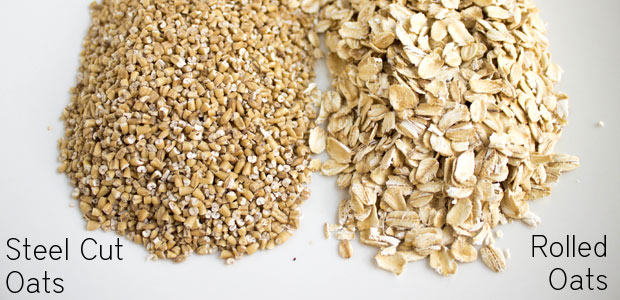
All oats for consumption have been stripped of their hard outer hulls, but retain the protective inner bran layer – its inherent healthy nutritives and fiber intact. However, oats can also contain antinutrients.
Possible antinutrients in oats:
- Phytic Acid. Oats have substantial phytic acid content – but low phytase enzyme content;
To break down phytic acid – All forms of oats require soaking for 12-24 hours with extra phytase enzymes added
- Lectin (Agglutinin). Oats typically have LOW agglutinin levels, provided they have not been cross-contaminated with wheat, barley or rye;
- Gluten / Gliadin (Prolamin). Pure/uncontaminated oats are pretty much gluten free, just ensure they come from a certified gluten-free (non-contaminated) source
Oats can become cross-contaminated with other grains. Because of this issue, some products are labelled specifically as “pure” oats.
- Oats are often grown near fields or in crop rotation with wheat, barley and rye. These grains contain lectins – such as gliadin (the troublesome component of gluten) or agglutinins.
- Packaging plants can mix other grains in with the oats
Available forms of oats
And you thought that oats were just oats! 🙂 Really though – the difference between the forms is simply in the level of processing. No matter the level of processing, all oat forms have a similar nutritional profile;
- Oat groats. Nutty flavor, chewy texture;
- Steel-cut / Irish oats. Oat groats have been chopped into 2 or 3 pieces; nutty flavor; rank lower than rolled oats on the glycemic index , because it takes longer for digestive enzymes to reach and break down the starch in thicker pieces, slowing down its conversion to sugar; these oats have been heat-treated to about 110°F to prevent rancidity of polyunsaturated fatty acids;
- Oat flour (ground whole oat). Contains the antinutrient phytic acid and so should be properly prepared
- Rolled “Old Fashioned” oats. Steamed to soften and prevent rancidity (partially cooked at 200°F for 4-5 hours; polyunsaturated acids can otherwise go rancid within 3 months; even Scottish ), then put through mechanical rollers to flatten them into flakes; this increases surface area for a quicker soaking/cooking time than groats or steel-cut oats. Can be used in baked goods.
- Quick rolled oats. Same steaming / rolling as rolled oats, only more of it and rolled thinner; more fragmented than rolled oats – creamier and less chewy; even shorter soaking/cooking time;
- Instant oats. Steamed longer than quick oats, so precooked, rolled even thinner and then dehydrated; no cooking required, just rehydrate; often put in ready-to-use packets along with lots of sugar and artificial flavorings and mystery ingredients.
- Oatmeal powder. Sometimes used as baby food
Buy in small quantities
Oats have a higher fat content than most grains and so tend to go rancid faster – Buy in small quantities and store in the fridge.
How to make healthy oatmeal / porridge (for the Brits among us 🙂 )
Soak the oats before cooking them to reduce phytic acid content:
- Add to the pan you’ll use for cooking the oatmeal:
- 1 Cup rolled or steel cut oats (Serves 4)
- 1 Cup warm water
- 1 Tbsp. lemon juice or whey (required acid medium)
- 2 Tbsp. fresh rye or barley flour (lower agglutinin levels than wheat) to provide the phytase enzymes missing from the oats; grind a few whole rye grains in a mini grinder so they are fresh and so contain maximum phytase.
- Leave 12-24 hours
- Add 1 cup of water (and I usually add some anti-inflammatory cinnamon )
- Bring to a boil and cook for a few minutes to desired consistency (leave a bit soupy if you’re going to top with flaxseed – it will absorb the liquid).
- Serve with milk and/or fresh cream (Optionally add berries, banana, pecans, walnuts, maple syrup, a Tbsp of ground flax seed for some helpful hormonal balancing and Omega-3)
A note on sprouting oats
Phytate content of oat seeds decreased 79% during germination. From 0.35% 0.11%, assumed due to an increase in phytase activity as germination progressed. germinated (malted) porridge significantly increased iron and zinc uptake in humans. Processing oats, 2015
Oats were on the menu during hunter-gatherer paleolithic times
According to Sarah Pope MGA of The Healthy Home Economist:
- “The Archaeological Institute of America has recently reported the surprising results of tests conducted by scientists at the University of Florence. The tests involved a stone pestle recovered in the Apulia region of Southern Italy.
- Apulia is home to the archaeological site knows as the Paglicci Cave that was used by Paleolithic hunter-gatherers of the Gravettian culture between 32,000 and 34,000 years ago. These stone age humans painted murals on cave walls and engraved images of goats, cows, a serpent, and a nest with eggs. They also painted hunting scenes on bones.
- The stone pestle was originally discovered in the cave back in the 1950s, but tests have only now revealed the composition of the stone’sstarchy debris.
- The tests revealed that the stone pestle had been used to grind none other than dried oats! The oats were first gathered and then heated which likely served as a primitive form of food preservation in the cool, damp climate. The heating also helped to dry out the oats, making them easier to grind.
- Researchers suggest that the oat powder that resulted from the grinding process was boiled into a porridge-like gruel or even made into bread.”

Quinoa - Protein rich / Low gyycemic load
- Quinoa is a protein-rich and low glycemic load food, meaning it has only a small impact on blood sugar. This makes it a good grain to stabilize blood sugar and leaves you feeling satisfied.
- Research studies have shown that the prolamins in quinoa, corn and oats can damage the digestive tract in people with Celiac Disease yet these grains are frequently included in the ‘gluten-free’ diet.
References
Processing Oats and Bioactive Components, Apollinaire Tsopmo, in Processing and Impact on Active Components in Food, 2015
Miskind et al (1980, Nov), Distribution of wheat germ agglutinin in young wheat plants, Plant Phys. (1980 Nov) 66(5):950- 955 PubMed
Zafar TA, Aldughpassi A, Al-Mussallam A, Al-Othman A. Microstructure of Whole Wheat versus White Flour and Wheat-Chickpea Flour Blends and Dough: Impact on the Glycemic Response of Pan Bread. Int J Food Sci. 2020 Oct 5;2020:8834960. doi: 10.1155/2020/8834960. PMID: 33083447; PMCID: PMC7557900. PubMed














